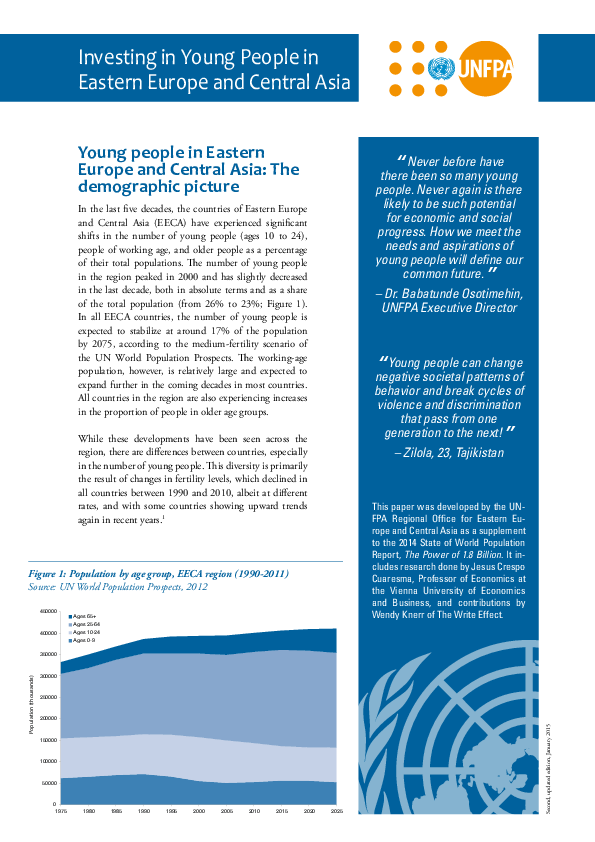The demographic shifts of the past decades, in particular the expansion of the working-age population and declining fertility rates, have opened up a window of opportunity for the countries of Eastern Europe and Central Asia. Provided they make the necessary investments and policy changes, these countries can reap the benefits of the demographic dividend — the economic growth potential that can result from shifts in a population’s age structure when more people, proportionally, are in the workforce and there are fewer non-working dependents.
One important element in realizing the demographic dividend is ensuring that the current generation of young people — some 23% of the region’s population — is equipped with the education, skills and health it needs to help translate today’s demographic realities into tomorrow’s economic and social prosperity.
This briefing on the investments that countries need to make in their youthful populations is a region-specific supplement to The State of World Population 2014. Published by UNFPA, the United Nations Population Fund, this global report shows how investing in young people is not only a human rights imperative; it makes economic sense.


